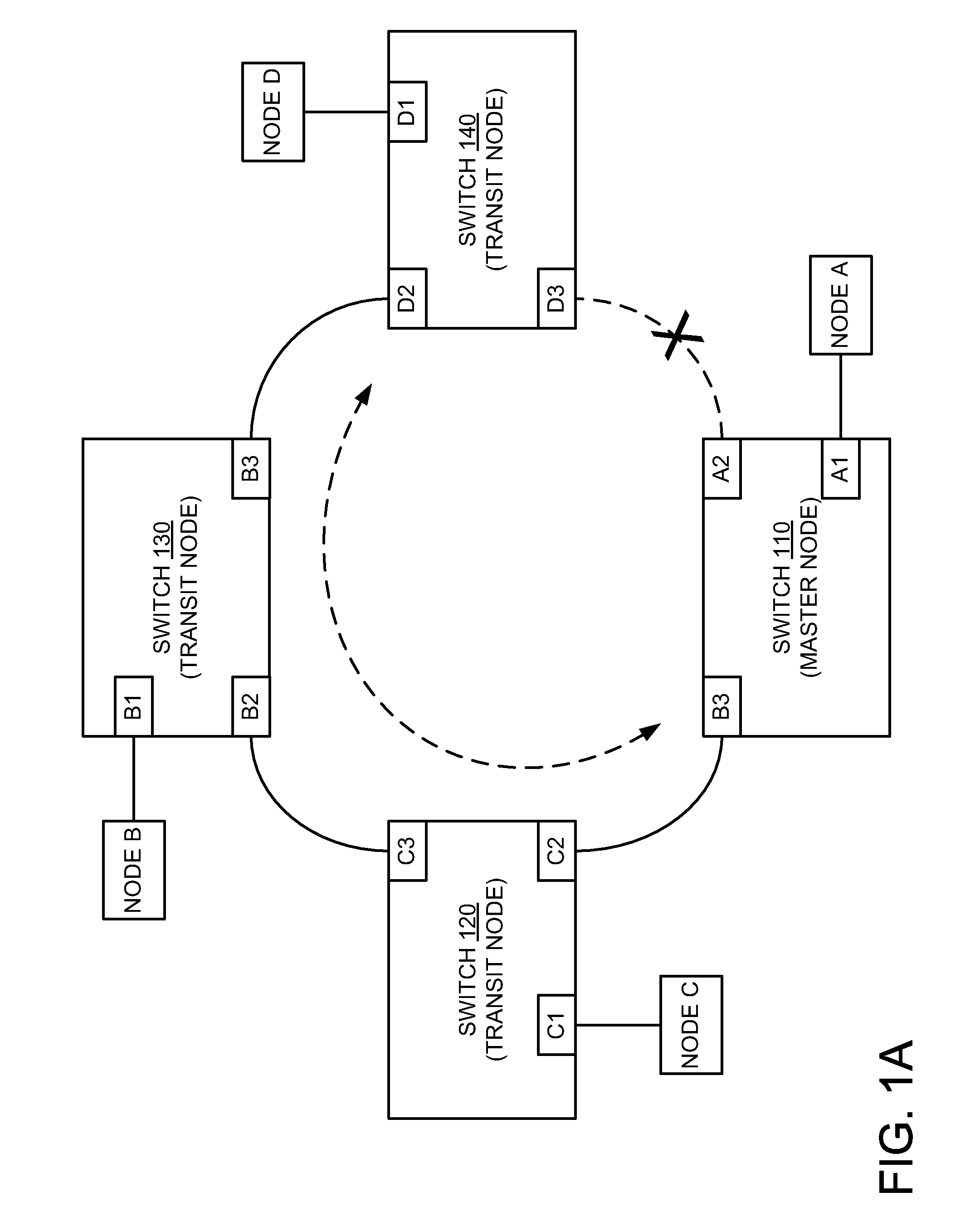Network convergence in response to a topology change
a network convergence and topology change technology, applied in the field of packet networks, can solve the problems of increasing complexity, affecting the network performance of the device, and often invalidating or at least incorrect forwarding entries, so as to reduce the failover time of the network
- Summary
- Abstract
- Description
- Claims
- Application Information
AI Technical Summary
Benefits of technology
Problems solved by technology
Method used
Image
Examples
Embodiment Construction
[0011]As provided herein, methods, apparatuses, and systems manage topology changes in a network, such as a ring network. Rather than flushing a forwarding database in response to a topology change and then relearning forwarding entries on a network device, various embodiments described herein perform conditional flooding of packets to reduce the failover time of the network. As used herein, the term “failover time” refers to the amount of time it takes for a network to converge after a topology change (e.g., the time it takes to re-learn forwarding entries).
[0012]Embodiments described herein are particularly relevant in hardware-based forwarding solutions. Forwarding packets in hardware is often referred to as “fast-path” forwarding while forwarding packets in software is often referred to as “slow-path” forwarding. This is because if a packet to be forwarded does not generate a hit on a forwarding entry in hardware (e.g., in a forwarding database stored in a memory such as an SRAM...
PUM
 Login to View More
Login to View More Abstract
Description
Claims
Application Information
 Login to View More
Login to View More - R&D
- Intellectual Property
- Life Sciences
- Materials
- Tech Scout
- Unparalleled Data Quality
- Higher Quality Content
- 60% Fewer Hallucinations
Browse by: Latest US Patents, China's latest patents, Technical Efficacy Thesaurus, Application Domain, Technology Topic, Popular Technical Reports.
© 2025 PatSnap. All rights reserved.Legal|Privacy policy|Modern Slavery Act Transparency Statement|Sitemap|About US| Contact US: help@patsnap.com



